
Ellis Island
The Past within the Present


Ellis Island is located in the United States, more precisely off the tip of Manhattan, New York City.
It is about 900 metres away from Liberty Island where the Statue stands.
Ellis Island immigration station was created in 1892 to process European immigrants who had left their native countries in order to escape poverty, famine, wars, economic crises, persecution…etc.
Although quota laws were passed after the First World War, only 1% of the overall number of immigrants were turned down by US officials.
Nowadays Ellis Island is an immigration museum.
Lucie-Marie-Valentin

This is a photograph of the first Ellis Island Immigration Station in New York Harbor.
It opened on January 2, 1892.
You can see the building looks different from the one we know today.
It was completely destroyed by fire on 15 June 1897.
“A fire of undisclosed origin, possibly faulty wiring, completely destroyed the Georgia pine structures on Ellis Island. No one died, but most of the immigration records dating from 1855 were destroyed. In five years, some 1.5 million immigrants had been processed.”
Unidentified photographer, United States Public Domain, via Wikimedia Commons
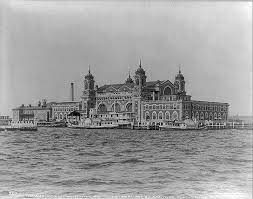
On 17 Dec 1900 the present main building opened.
Poor immigrants from Europe travelled steerage, the cheapest way of travelling, as they could not afford to buy first-class or second-class tickets.
The journey could take from one week to four weeks, depending on the weather.
After crossing the Atlantic Ocean, they arrived in New York harbour.
Ellis Island Immigration Office Building,
By unidentified photographer, Public Domain

After disembarking the steamship, they had to take a ferry to Ellis Island immigration station where they would be examined and where their identity would be checked.
After getting off the ferry, immigrants walked to the immigration station.
Some of them travelled with their families. Sometimes they were on their own as they may have left their parents or wives and children behind until they settled down in America and asked their families to join them.
Diego-Elise-Ewen-Inès
Immigrants landing at Ellis Island, New Jersey, United States, 1900
Wikimedia Commons

They made for the Great Hall, carrying their cases, bags or bundles. They had taken very little luggage, just the bare necessities.
Photo: Ellis Island Foundation, Inc./National Park Service

The Great Hall was a very large hall on the ground floor of the building. We can see two US flags on either side of the room.
That was where their American adventure began!
Newcomers were gathered while they waited for the
examinations to start.
They were asked to wait in lines separated by iron railings.
Diego-Elise-Ewen-Inès
“The Great Hall”, ca. 1910. Photograph by Augustus Sherman
Statue of Liberty NM, National Park Service

Thousands of immigrants were processed on Ellis Island -up to 5,000 people every day.
The Great Hall was crowded with people waiting in line to take the medical and legal examinations.
Although the exams had not started yet, immigrants knew they were being watched already by military doctors in uniforms. That’s why they were afraid of looking sick, weak or unhealthy and of being sent back to their native countries.
Aurélia-Enzo-Kavin-Raphaël
Interior view of the Great Hall at Ellis Island Immigration Station in New York, 1910s
http://www.museumoffamilyhistory.com/ei-05d.jpg

After waiting for a long time, immigrants had to take the medical test which was called the ‘Six-second medical exam”.
It consisted in climbing the Great Hall stairs.
While immigrants climbed the stairs, doctors at the top of the stairs watched them and tracked down signs of physical weakness or handicap.
Next, other doctors looked for contagious diseases like trachoma which was an eye disease that could make you blind.
Aurélia-Enzo-Kavin-Raphaël
Physical examination of female immigrants at Ellis Island, New York City, 1911
Library of Congress, public domain

During the medical examination men were separated from women and children under 15.
Military doctors also looked for contagious diseases like TB (Tuberculosis).
If some symptoms aroused suspicion, doctors used a piece of chalk to mark the passengers’ clothes on the shoulder or the lapel of their jackets with a letter of the alphabet: ‘H’ for heart trouble;’L’ for lameness; ‘X’ for feeble-mindedness or mental trouble.
This meant those people needed further examination and had to take more specific medical tests.
On the other hand those who had passed the medical test were ready to take the legal exam.
Aurélia-Enzo-Kavin-Raphaël
Immigrant children being examined by a city health officer upon arrival, 1911
History,com
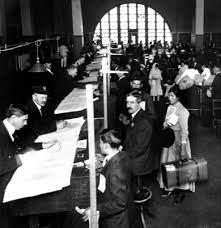
This picture was taken during the legal exam which took place right after the medical examination.
During that test, immigrants were asked twenty-nine questions such as: “Can you read and write?”,”What’s your name?”, Where do you come from?”, “Have you ever been to prison?”, What’s your final destination?”, “How much money do you have?”
In this picture we can see that the Hall is really crowded.
Because the tests lasted a long time- about six hours- some people were allowed to sit and rest.
As some immigrants felt tired and anxious, they were so flustered that they could not answer the clerks’ questions. That’s why they were allowed to rest and try again later.
Julien-Léha-Sana
The inspection process, part 2 : The legal test
http://www.museumoffamilyhistory.com/ei-nps-01d.jpg
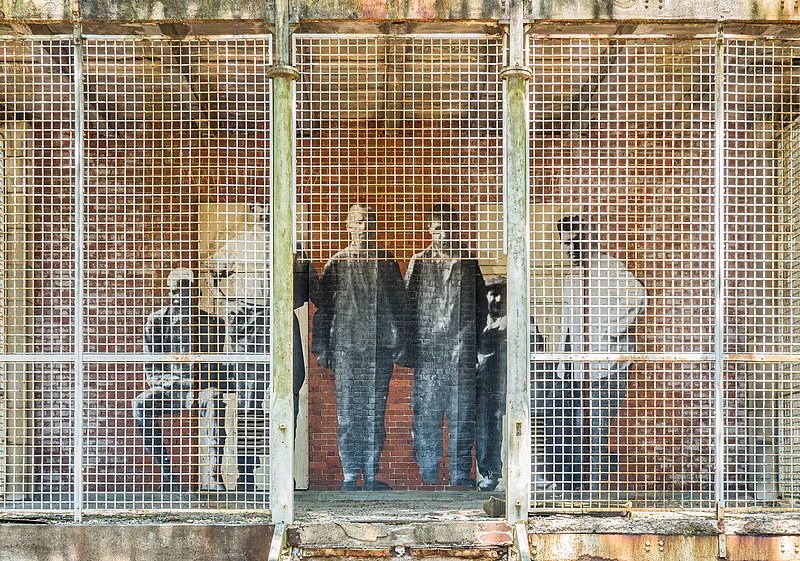
By Rhododendrites – Own work, CC BY-SA 4.0, https://commons.wikimedia.org/w/index.php?curid=72932178
For eighty percent (80%), the process took a few hours only and they were free to go.
However, immigrants who didn’t pass the tests were not allowed to leave Ellis Island.

Those who were ill or contagious had to stay on Ellis Island until they got better. They were looked after in the immigration station hospital ward.
The photograph is one from the early 20th century, when the hospital was operational.

The dining room for detained immigrants at Ellis Island
Bettmann Archives, Getty Images
Those who did not have enough money had to wait until their relatives or sponsors in America were contacted.
Some of them could be sent back to their home countries at the expense of the ship company if they were suspected of being anarchists, bolsheviks, communists or political activists.
If immigrants were detained on Ellis Island, they were given free meals as we can see in the photo.
Julien-Léha-Sana

After going through such ordeals, immigrants looked forward to starting from scratch. In other words they looked forward to starting a new life in the USA.
They dreamt of a better life for them and their children.
They hoped to succeed, to make it in America.
They intended to climb the social ladder by working their way to the top.
Those who had left because of war, dictatorship or joblessness wanted to escape hardships and start over in America.
They wished to lead a better and more comfortable life with fewer problems and no persecutions.
Corentin-Emma-Matea-Méline
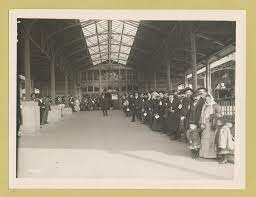
Passed and waiting to be taken off Ellis Island, 1902-1912
Levick, Edwin (1869-1929), Photographer
Ellis Island Immigration Station (N.Y. and N.J.) , New York Public Library
After they had passed the two exams, immigrants who were allowed in the US took the ferry back to New York harbour.
Here in the photo they are waiting in line for the ferry.
It was a relief for them to be allowed to leave.
Some of them stayed in New York with relatives who put them up for a few days until they could find a job and rent a room.
Others who didn’t know anyone had to find accomodation and a job to earn a living while some even had to learn how to speak English.
Other newcomers took trains to big industrial cities like Chicago, Detroit or Pittsburgh while some others went further west to try their luck in California.
Corentin-Emma-Matea-Méline
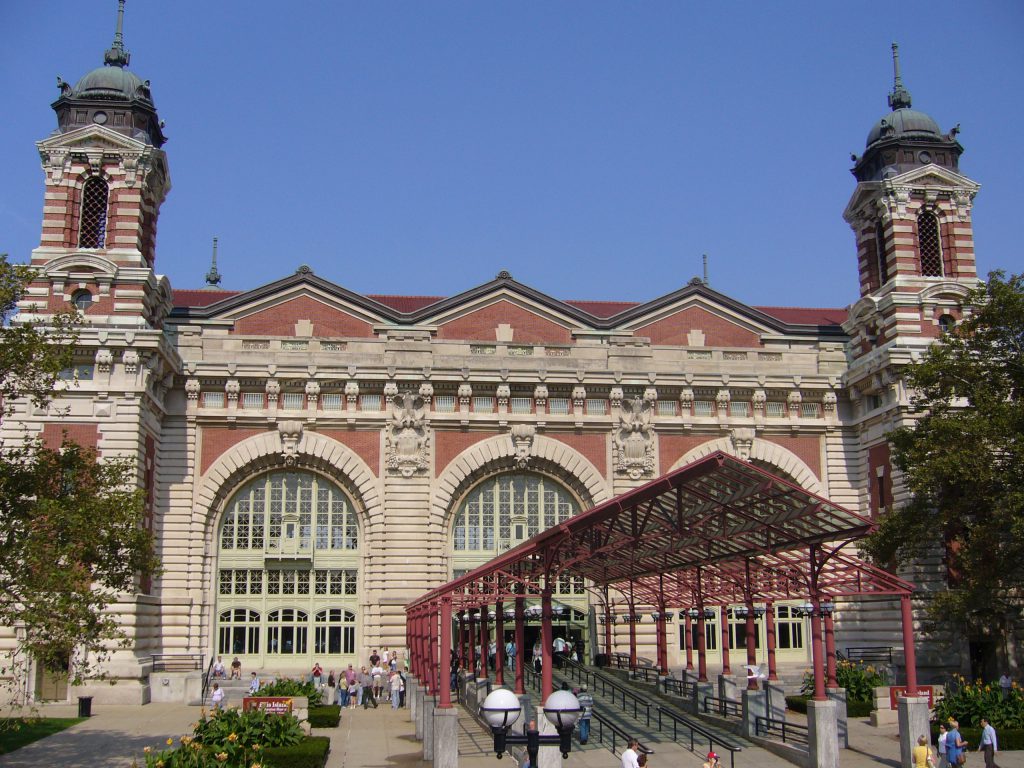
Nowadays Ellis Island has become a famous museum about European immigration in the USA.
After closing down in 1954, Ellis Island immigration building was abandoned.
The main building was restored after thirty years and opened as a museum on September 10, 1990.
The Great Hall, which is huge and impressive, was totally restored.
Millions of American and foreign tourists come to visit Ellis Island immigration museum to learn about the history of immigration or find information about their grandparents, relatives or ancestors.
Léanne-Lola-Nando-Victoire
The Great Hall, Ellis Island nowadays, CCO Public domain

During our visit we spoke to a woman who had just found information about her grandparents and who was quite emotional about it.
She told us her grandparents were steerage passengers and that they had come with only 10 bucks in their pockets. She said that she realised how difficult it had been for them to leave their homes, their families, everything, to come to America. She sounded so proud when she said ‘They made it…And they made it good for us. So, isn’t that cool?’
This lady had just reconnected with her past…
No better way to feel the past within the present!
Léanne-Lola-Nando-Victoire
THANK YOU FOR READING!
Authors: 2nde 9 students, La Bruyère High School, Versailles, France
Proofreading: Mrs Gaudin Murat (teacher of English as a second language)
March 2021
Published: Mar 26, 2021
Latest Revision: May 25, 2021
Ourboox Unique Identifier: OB-1088989
Copyright © 2021







